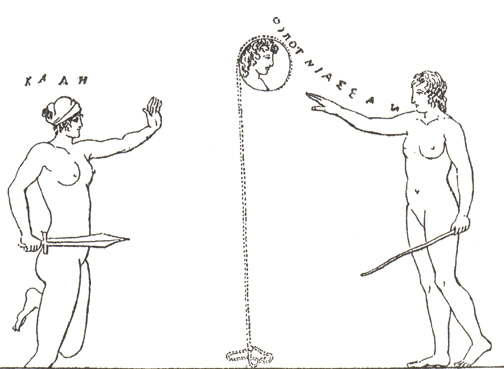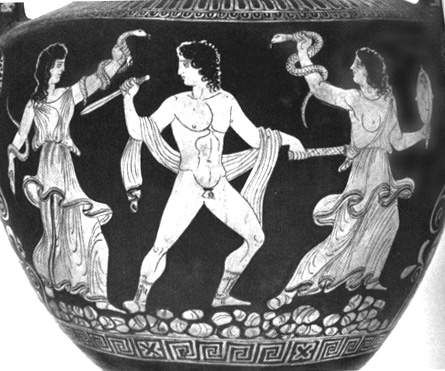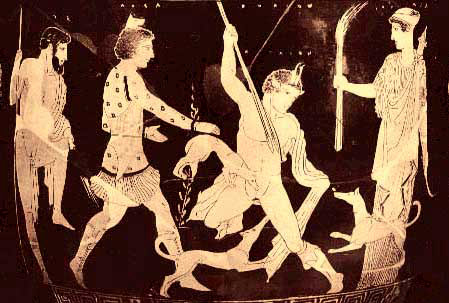Medea Again
The fame of this powerful priestess spread across the Mediterranean. Several images from southern Italy show her rejuvenating a man in a cauldron. This bronze from Basilicata depicts her carrying out a ceremony with one hand upraised a as if anointing from the jug of medicine she holds in the other.
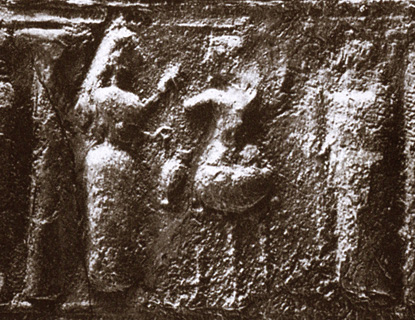
The same scene from an Etruscan bronze from Cerveteri. Medea (here identified in Etruscan letters as Metaia) holds up a wand or spoon.
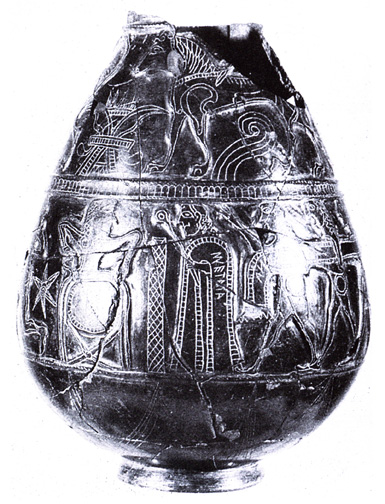
A much later image from a lost vase painting shows two witches "drawing down the moon," a common theme in Greco-Roman literature from the 4th century BCE forward. This rite was first described for Thessalian women, but over time educated Greek men increasingly attributed destructive power to this rite, which they compared to making rivers run upstream and other acts violating the law of Nature. To them female power itself was a violation of the natural order.
